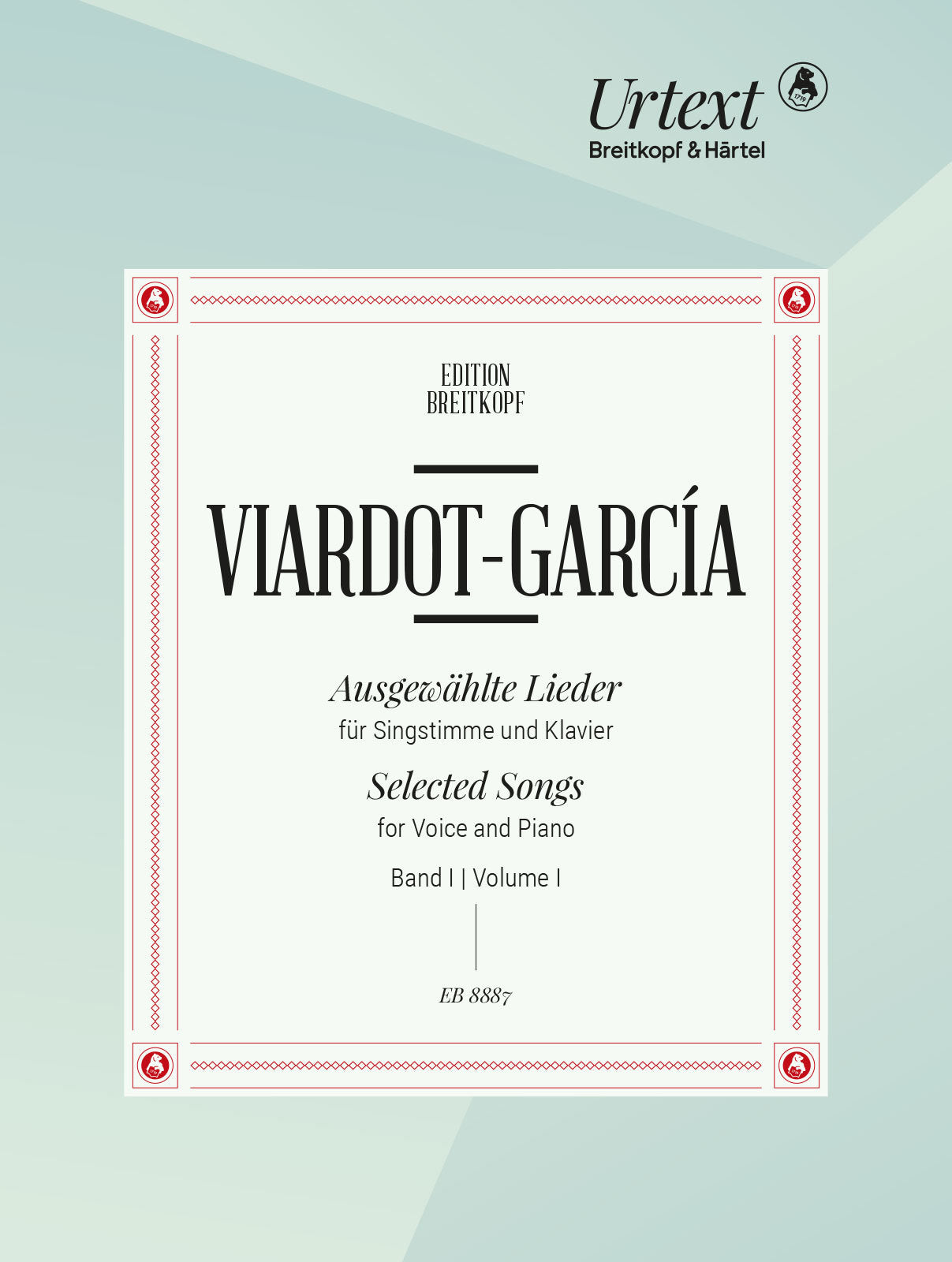
BREITKOPF & HARTEL - 15131
Viardot-García Selected Songs Vol. 1 (German / Russian / Italian)
Composer: Pauline Viardot
Publisher: Breitkopf & Härtel
Instrumentation: Voice
Binding: Softcover
Dimensions: 9 in x 12 in
Pages: 80
Viardot-García Selected Songs Vol. 1 (German / Russian / Italian)
Juilliard Store
144 West 66th Street
New York NY 10023
United States
Choose options
Viardot-García Selected Songs Vol. 1 (German / Russian / Italian)
Juilliard Store
144 West 66th Street
New York NY 10023
United States
Viardot-García Selected Songs Vol. 1 (German / Russian / Italian)
Juilliard Store
144 West 66th Street
New York NY 10023
United States
This Viardot Edition is the first critical edition of Pauline Viardot’s songs. It is based on fair copies of the woman composer, who was one of the most versatile singers and important representatives of the bel canto performance tradition in the 19th century. The present volume includes settings of Russian texts by Pushkin, Feth and Turgenev as well as Italian-language songs based on Tuscan folk lyrics. All songs are accompanied by German translations, which were specifically prepared for the German first edition in the 19th century.
The solo Lied with piano accompaniment was Pauline Viardot’s main genre, which she made bloom in the most diverse colors, depending on text and style. In addition to her own use, the sought-after vocal pedagogue also wrote her songs for her students. Accordingly, the songs included in this volume are suitable for different vocal genres in terms of their ranges and expressive content: for example, songs such as “Zwei Rosen”, “L'innamorata” or “Das Vöglein” are suitable for light, high voices, while lyrical, lower voices can find suitable songs with “Ruhige, heilige Nacht”, “Flüstern, atemscheues Lauschen” or “C’era una volta”. For versatile voices with a gift for coloratura, “Non vi maravigliate” is a little showpiece, while voices with the ability for dramatic accents can sing songs like “Die Beschwörung” or “Mitternächtige Bilder”. Unlike the sometimes very long Russian songs, the consistently short Italian songs are well suited as an introduction to the easier Italian repertoire. The songs depict clearly defined scenes within which the singers are able to develop their respective characters
